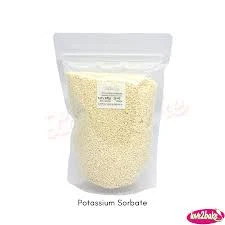
Understanding the Role of E471 as a Permitted Emulsifier in Food Products
Understanding E471 The Permitted Emulsifier
E471, commonly known as mono- and diglycerides of fatty acids, is a widely used food additive that serves as an emulsifier. This means it helps to stabilize mixtures of oil and water, improving the texture, appearance, and shelf-life of various food products. Understanding the role and the benefits of E471 in food production is essential for consumers who wish to make informed choices about their diets.
What is E471?
E471 is derived from glycerol, a simple polyol compound, and fatty acids, which are long hydrocarbon chains. The process involves the glycerol combining with fatty acids to form mono- and diglycerides. These emulsifiers can be sourced from both plant and animal fats, though many manufacturers prefer plant-derived versions due to dietary concerns and consumer preferences for vegetarian or vegan options.
E471 is recognized and permitted by many food safety authorities globally, including the European Food Safety Authority (EFSA) and the U.S. Food and Drug Administration (FDA). These agencies have deemed it safe for consumption, provided it is used within established limits.
Functions of E471 in Food Products
1. Emulsification E471's primary function is to combine ingredients that usually don’t mix well, such as oil and water. This property is crucial in products like mayonnaise, salad dressings, and ice cream, where a stable blend is required to prevent separation.
2. Texture Improvement Emulsifiers like E471 can significantly enhance the texture of foods. In baked goods, for example, E471 helps to create a soft, moist crumb and extends shelf life by preventing staling.
permitted emulsifier e471

3. Stabilization In products that contain fats, such as chocolate and margarine, E471 stabilizes the formulation, ensuring a uniform consistency and improving the mouthfeel.
4. Fat Reduction E471 can allow for fat reduction in products by creating a desirable texture and flavor with lower fat content. This is particularly beneficial in low-fat or reduced-calorie versions of products, making them more appealing to health-conscious consumers.
Safety and Controversies
While E471 is considered safe by regulatory authorities, it is essential to note that it may not align with the dietary preferences of all individuals. Some consumers may be concerned about the source of E471, particularly if derived from animal fats, making it unsuitable for vegetarian or vegan diets.
Furthermore, the use of emulsifiers has sparked debates regarding their health implications. Some studies suggest potential links between high consumption of emulsifiers and metabolic issues, although more research is required to establish concrete conclusions. It's crucial for consumers to stay informed about ingredient sources and their potential effects on health.
Conclusion
E471 is a crucial ingredient in the modern food industry, contributing to the stability, texture, and overall quality of a wide range of products. While the safety of E471 is backed by significant research and regulatory approval, consumers should be aware of their personal dietary preferences and any potential health discussions surrounding food additives. As with all food ingredients, moderation is key, and understanding what goes into the food we consume empowers us to make better choices for our health and wellbeing. Whether you are a food lover, a home cook, or someone concerned with dietary integrity, knowing about emulsifiers like E471 can enhance your culinary experience and help you navigate the complex world of food ingredients.
-
Understanding Synthetic Rubber OptionsNewsApr.27,2025
-
Trichloroisocyanuric Acid: Essential for Clean and Safe WaterNewsApr.27,2025
-
Sodium Dichloroisocyanurate: Key to Safe Water TreatmentNewsApr.27,2025
-
Sodium Acid Pyrophosphate: Essential in Modern Food ProcessingNewsApr.27,2025
-
Essential Water Treatment ChemicalsNewsApr.27,2025
-
Denatured Alcohol and Its Industrial UsesNewsApr.27,2025
-
The Versatile Uses of Sodium BicarbonateNewsApr.24,2025
Hebei Tenger Chemical Technology Co., Ltd. focuses on the chemical industry and is committed to the export service of chemical raw materials.
-

view more DiethanolisopropanolamineIn the ever-growing field of chemical solutions, diethanolisopropanolamine (DEIPA) stands out as a versatile and important compound. Due to its unique chemical structure and properties, DEIPA is of interest to various industries including construction, personal care, and agriculture. -

view more TriisopropanolamineTriisopropanolamine (TIPA) alkanol amine substance, is a kind of alcohol amine compound with amino and alcohol hydroxyl, and because of its molecules contains both amino and hydroxyl. -

view more Tetramethyl Thiuram DisulfideTetramethyl thiuram disulfide, also known as TMTD, is a white to light-yellow powder with a distinct sulfur-like odor. It is soluble in organic solvents such as benzene, acetone, and ethyl acetate, making it highly versatile for use in different formulations. TMTD is known for its excellent vulcanization acceleration properties, which makes it a key ingredient in the production of rubber products. Additionally, it acts as an effective fungicide and bactericide, making it valuable in agricultural applications. Its high purity and stability ensure consistent performance, making it a preferred choice for manufacturers across various industries.











